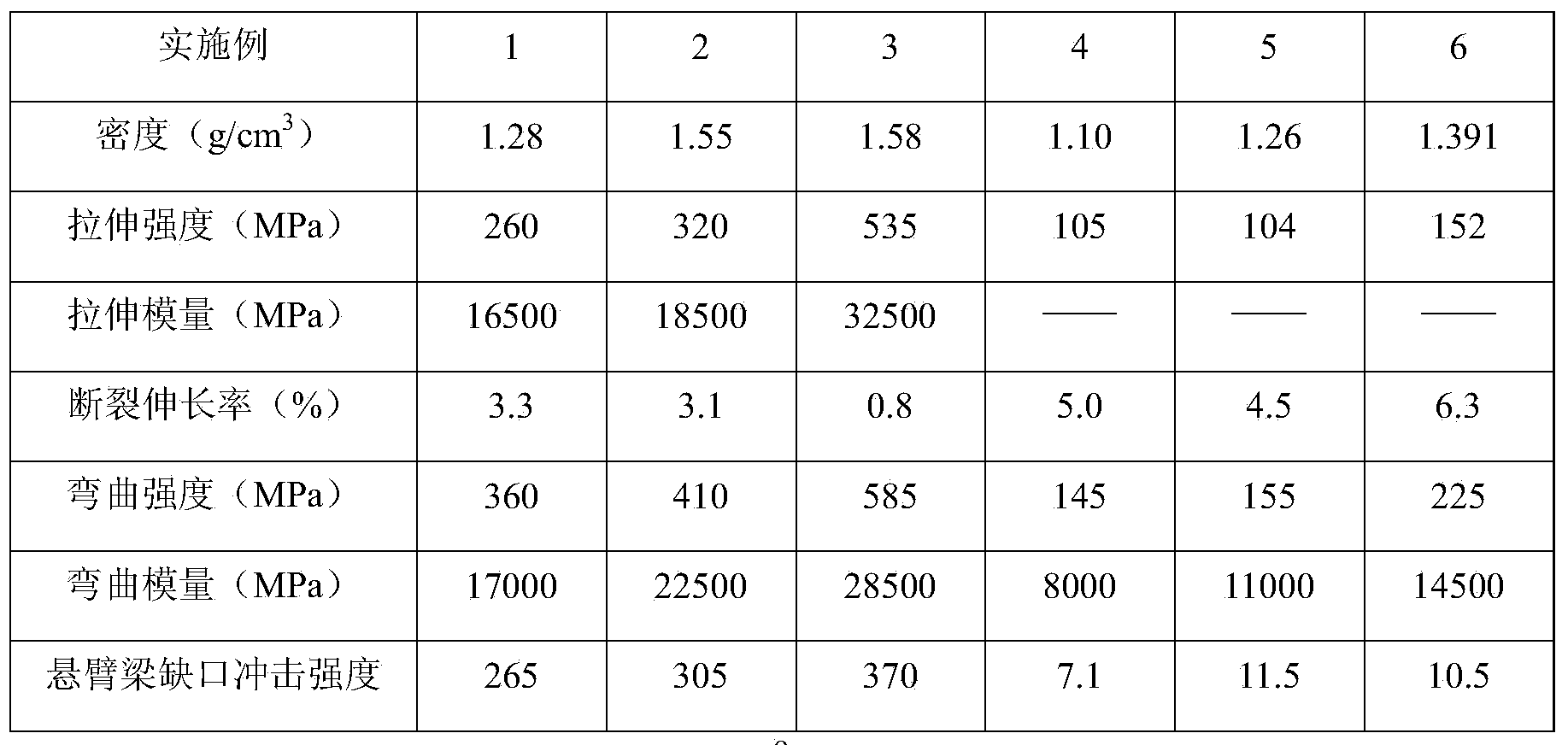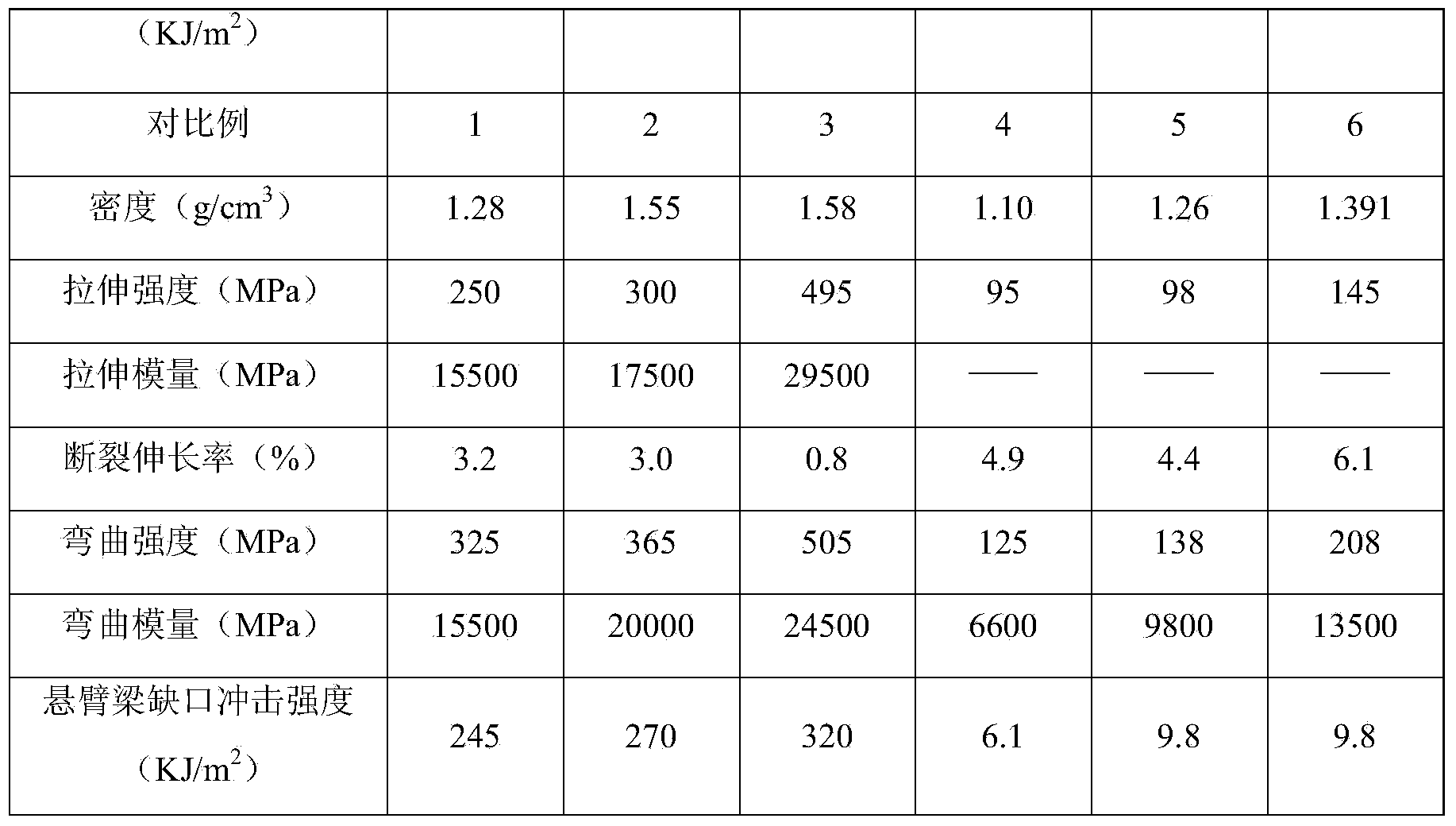Fiber-reinforced thermoplastic composite and preparation method thereof
A fiber-reinforced, composite material technology, applied in the field of new material production and composite material production, can solve the problem that composite materials are difficult to meet requirements, and achieve the effect of improving mechanical properties
- Summary
- Abstract
- Description
- Claims
- Application Information
AI Technical Summary
Problems solved by technology
Method used
Image
Examples
Embodiment 1
[0034] Step 1, after immersing 45wt% glass fiber in the modified surface treatment agent for 1min, place the impregnated glass fiber at room temperature and ventilated conditions for 60min to volatilize ethanol, and then weave the surface-treated glass fiber into Two-dimensional or three-dimensional fabric; the modified surface treatment agent is 0.5wt% polypropylene resin powder (particle size 0.1nm ~ 1μm) and 99.5wt% vinyltriethoxysilane ethanol solution; vinyltriethyl The content of vinyltriethoxysilane in the oxysilane ethanol solution is 0.5wt%;
[0035] Step 2: Extrude 55wt% polypropylene resin from an extruder heated to 180°C and laminate it with glass fiber fabric that has been preheated to 180°C, and enter the pressure roller equipment to pressurize the polypropylene resin in a heated and molten state Fully soak the fiberglass fabric;
[0036] Step 3, cooling the infiltrated glass fiber fabric and cutting it to a fixed length to obtain a glass fiber reinforced polypr...
Embodiment 2
[0039] Step 1, after immersing 50wt% of the glass fiber in the modified surface treatment agent for 1.5min, place the impregnated glass fiber at room temperature and ventilated conditions for 120min to volatilize the ethanol, and weave it into a two-dimensional or three-dimensional fabric through a weaving equipment; The modified surface treatment agent is 3.5wt% nylon 6 resin powder (particle size 100nm ~ 1μm) and 96.5wt% vinyltriethoxysilane ethanol solution; vinyl triethoxysilane ethanol solution The content of triethoxysilane is 3wt%;
[0040]Step 2: Extrude 50wt% Nylon 6 resin from an extruder heated to 240°C and laminate it with glass fiber fabric preheated to 240°C, and enter the pressurized equipment to make the heated and molten nylon 6 resin soak into the glass fiber fabric ;
[0041] Step 3, cooling the infiltrated glass fiber fabric and cutting it to a fixed length to obtain a glass fiber reinforced nylon 6 resin sheet.
Embodiment 3
[0043] Step 1, after immersing 55wt% glass fibers in the modified surface treatment agent for 2 minutes, place the soaked glass fibers at room temperature and ventilated conditions for 90 minutes to volatilize ethanol, and weave them into two-dimensional or three-dimensional fabrics through weaving equipment; The modified surface treatment agent is 6.5wt% polyphenylene sulfide resin powder (particle size 10nm ~ 1μm) and 93.5wt% vinyltriethoxysilane ethanol solution; vinyl triethoxysilane ethanol solution The content of triethoxysilane is 5wt%;
[0044] Step 2: Extrude 45wt% polyphenylene sulfide resin from an extruder heated to 300°C and laminate it with glass fiber fabric preheated to 300°C, and enter the pressurized equipment to heat and melt the polyphenylene sulfide resin Impregnated fiberglass fabric;
[0045] Step 3, cooling the impregnated glass fiber fabric and cutting it to a fixed length to obtain a glass fiber reinforced polyphenylene sulfide resin sheet.
PUM
| Property | Measurement | Unit |
|---|---|---|
| particle diameter | aaaaa | aaaaa |
| particle diameter | aaaaa | aaaaa |
| particle diameter | aaaaa | aaaaa |
Abstract
Description
Claims
Application Information
 Login to View More
Login to View More - R&D
- Intellectual Property
- Life Sciences
- Materials
- Tech Scout
- Unparalleled Data Quality
- Higher Quality Content
- 60% Fewer Hallucinations
Browse by: Latest US Patents, China's latest patents, Technical Efficacy Thesaurus, Application Domain, Technology Topic, Popular Technical Reports.
© 2025 PatSnap. All rights reserved.Legal|Privacy policy|Modern Slavery Act Transparency Statement|Sitemap|About US| Contact US: help@patsnap.com


